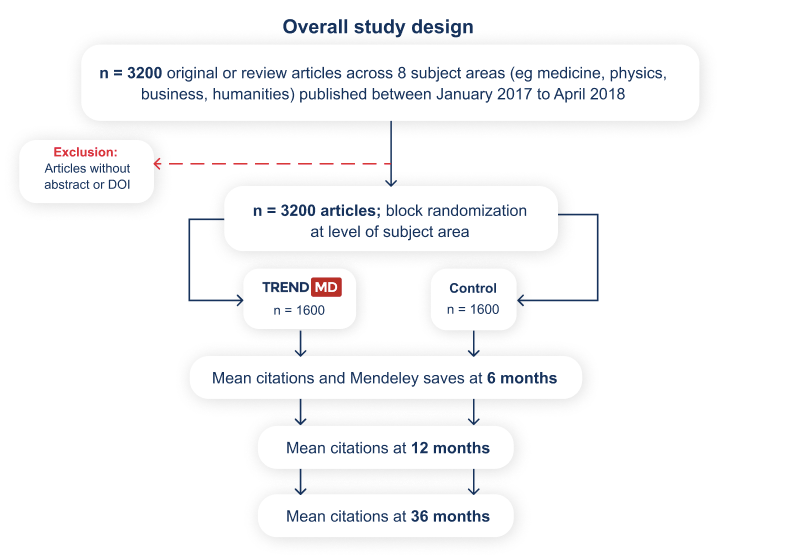Citations are the leading indicator of scholarly impact, yet there are few evidence-based ways to increase the citation rate of peer-reviewed articles. Data suggests that 35% of articles published between 1990 and 2015 remain uncited, a figure that might continue to grow. [1] The enormous increase in published scholarly literature may impede academic progress and the adoption of new ideas, according to a 2021 study. [2] The authors suggest changes in the dissemination and discoverability of recent research to counter this effect.
TrendMD's efficient dissemination of scholarly research fills that void. We've demonstrated it with a prior randomized controlled trial, and today we'll discuss the 36-month follow-up results to that trial.
In a prior randomized controlled trial published in the Journal of the Association for Information Science and Technology, we showed that articles disseminated by our cross-publisher distribution platform after 12 months saw a 50% increase in citations relative to the control. As a follow-up, we've compared the citation rates in both groups after 36 months. This follow-up research is published in JMIR.
Mean citations over 12 months: TrendMD versus control
We found that articles disseminated in the TrendMD network maintained a citation advantage after 36 months. Articles randomized to TrendMD showed a 28% increase in mean citations relative to the control.
Here's how we determined that figure. We block randomized 3,200 published articles in 64 peer-reviewed journals across eight subject areas. The articles were randomly assigned at the subject level to either the TrendMD group (n=1600) or the study's control group (n=1600). Articles were promoted in the TrendMD Network for six months. We compared the citation rates in both groups after 36 months.

As we explained, articles randomized to TrendMD showed a 28% increase in mean citations relative to the control. The difference in mean citations at 36 months for articles randomized to TrendMD versus the control was 10.52 (95% CI 3.79-17.25) and was statistically significant (P=.001).
Mean citations over 36 months: TrendMD versus control
“TrendMD is an efficient digital tool for knowledge translation and dissemination to targeted audiences to facilitate the uptake of research,” our follow-up article concludes. You can read the full article here.
[1] Van Noorden R. The science that's never been cited. Nature 2017 Dec 14;552(7684):162-164. [CrossRef] [Medline]
[2] Chu JSG, Evans JA. Slowed canonical progress in large fields of science. Proc Natl Acad Sci U S A 2021 Oct 12;118(41):e2021636118 [FREE Full text] [CrossRef] [Medline]